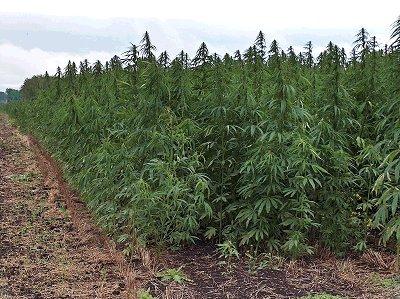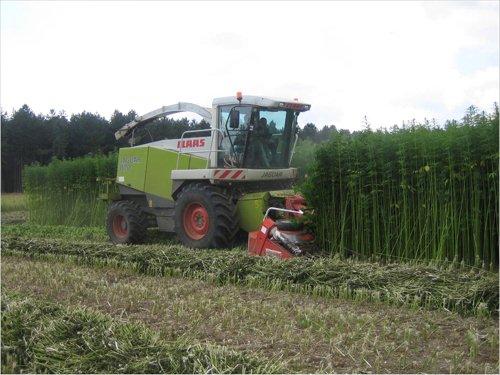 Industrial
Hemp Information
Industrial
Hemp Information
Home
* Contact * INDEX *
Current Issues * Priority Issues *
Reference Index * Selwyn's
Profile * Your
Comments
.
Industrial
Hemp
- A Versatile Plant
Essentially there are two
fractions to the plant, Seed or Grain and Fibre. Some products made from the
fibre include: all grades of paper, textiles, geo-textiles, structural
reinforcement building materials, fibreglass replacement products, lightweight
sandwich boards, composite boards, absorbency products such as kitty litter,
potting mix, nappies and fem-care products and fuel.
Hemp seed whole, hulled or crushed for oil are used in food products such as
muesli bars, cakes, breads, biscuits, butter paste, non-dairy milk, tofu and
cheese, ice cream, the essential and cold pressed oils are used in cosmetics
(such as shampoo, soaps and moisturisers), as well as having therapeutic
qualities similar to evening primrose oil, cod liver oil, flaxseed oil and
soybean supplements.
Viable fibre alternatives are needed as world population and fibre consumption
increases. While the use of wood, cotton and synthetic products is being
discouraged due to environmental concerns, the gap between supply and demand
will inevitably increase. This factor is becoming more evident with the
announcement in Japan that they are targeting that 10% of paper must be from
non-wood fibres by 2005, in the EU 80% of car interior panels must be recyclable
by 2006.
These are but a few of the
potential areas where hemp is already being used but present demand is having
some difficulty in finding supply. Further, hemp fibre has been found to be a
lighter, stronger alternative to fibreglass so it is for technical reasons as
well as environmental reasons hemp is in demand.
From an agronomic and market point of view industrial hemp is an environmentally
friendly crop, which produces environmentally friendly products. It has enormous
commercial potential and can be competitive on every level of production.
HEMP FACTS...
 |
A Hemp crop produces nearly 4 (four) times as much raw fibre as an equivalent-sized tree plantation
|
 |
Trees take approximately 20 years to mature… Hemp takes 4 months
|
 |
Hemp needs no pesticides because it is unpalatable to insects
|
 |
Hemp needs no herbicides because it grows too quickly for any weed to compete
|
 |
Hemp paper does not need chlorine bleach, which heavily pollutes rives near wood-pulp paper mills
|
 |
Environmentally sound Hemp paper is stronger, finer and longer lasting than wood-based papers
|
 |
Hemp paper is used for bank notes and archives
|
 |
Hemp uses the sun more efficiently than virtually any other plant on the planet
|
 |
Hemp can grow in virtually any climate and soil condition, and is excellent for reclaiming otherwise-unusable land
|
 |
Hemp seed does not contain the anti-nutrient trypsin inhibitors as found in soymilk
|
 |
Until 1883, more than three quarters of the world's paper was made from Hemp fibre. Since the 1900s, all newspapers and most books and magazines have been printed on wood-pulp paper
|
 |
"The earliest-known woven fabric was apparently of Hemp, which began to be worked in the eighth millennium (8,000-7,000 BC)" say Columbia History of the World 1981
|
 |
For more than a thousand years until 1883 AD, Cannabis/Hemp was our planet's largest agricultural crop and most important industry for thousands upon thousands of products and enterprises, producing the overall majority of the earth's fibre, fabric, lighting oil, paper, incense and medicines, as well as being a primary source of protein for humans and animals alike
|
 |
Hempseed oil is said to burn the brightest of all lamp oils, and has been used since the days of Abraham
|
 |
Hemp offers a valuable and sustainable fuel of the future, "growing oil wells". Hemp has an output equivalent to around 5000 litres of methanol per acre year (10 tonnes Biomass/acre, each yielding 500 litres methanol/ton). Methanol used today is mainly made from natural gas, a fossil fuel. Methanol is currently being studied as a primary fuel for automobiles, hopefully reducing CO2 levels
|
 |
Henry Ford dreamed that someday automobiles would be grown from the soil. The Ford motor company, after years of research produced an automobile with a plastic body. Its tough body used a mixture of 70% cellulose fibres from Hemp. The plastic withstood blows 10 times as great as steel could without denting! Its weight was also 2/3 that of a regular car, producing better economy. Henry Ford was forced to use petroleum due to Hemp prohibition
|
Hanf in German; Canamo in Spanish; Chanvre in French; Konoplya in Russian; Kender in Hungarian; Tal Ma in Chinese … Hemp is fully international!
Home
* Contact * INDEX *
Current Issues * Priority Issues *
Reference Index * Selwyn's
Profile * Your
Comments
.
INDUSTRIAL
HEMP
CULTIVATION - GROWERS GUIDE
Plant
Description:
Industrial Hemp (Cannabis sativa L.) is
an annual, herbaceous plant with a slender stem, ranging in height from 4 to 15
feet and a diameter from ¼" to ¾". The innermost layer is the pith,
surrounded by woody material known as hurds. Outside of this layer is the
growing tissue, which develops into hurds on the inside and into the bast fibres
on the outside. The stem is more or less branched, depending on the crop
density. When sown thickly the stems do not branch. The leaves are of a palmate
type and each leaf has 7 to 11 leaflets, with serrated edges. The strong taproot
penetrates deep into the soil. However, if the soil conditions are unfavorable,
the main root remains short, while lateral roots become more developed.
Soils:
Industrial hemp can be grown
on a wide variety of soil types. Hemp prefers a sufficiently deep, well-aerated
soil with a pH of 6 or greater, along with good moisture and nutrient holding
capacity. Poorly drained soils, however, are not recommended as excess surface
water after heavy rains can result in damage to the hemp crop. Hemp is extremely
sensitive to flooding and soil compaction.
Soil
Preparation:
A fine, firm seedbed is
required for fast, uniform germination of hemp seed. Conventional seedbed
preparation and drilling are probably ideal. The seedlings will not emerge
uniformly if the seed is placed at a depth greater than 2 inches. 'No-till
systems' can also be used with good results, but may be more vulnerable to
erratic emergence depending on the growing season.
Nutrition:
To achieve an optimum hemp
yield, twice as much nutrient must be available to the crop and will finally be
removed from the soil at harvest. A hemp field produces a very large bulk of
plant material in a short vegetative period. The nitrogen uptake is most
intensive the first 6 to 8 weeks, while potassium and in particular phosphorous
are needed more during flowering and seed formation. Industrial hemp requires 80
to 100 lbs/ac (90 to 112 kg/ha) nitrogen, 35 to 50 lbs/ac (39 to 56 kg/ha)
phosphate and 52 to 70 lbs/ac (60 to 80 kg/ha) potash.
Growing
Conditions:
Hemp prefers a mild climate,
humid atmosphere, and a rainfall of at least 25-30 inches per year. Good soil
moisture is required for seed germination and until the young plants are well
established.
Weed
Control:
Industrial hemp is an
extremely efficient weed suppressor. No chemicals are needed for growing this
crop. Industrial hemp is a low maintenance crop. There are no registered
chemicals for weed control in hemp. A normal stand of 200 to 300 plants per
square meter shades out the weeds, leaving the fields weed-free at harvest.
Time of
Seeding:
The best time to seed hemp
should be dictated by the weather and soil conditions, rather than the date on
the calendar. Hemp can be seeded as early as two weeks prior to corn provided
that soil conditions are optimum. However, seeding should not begin until soil
temperatures have reached a minimum of 42 - 46 °F (6 - 8°C).
Hemp seed germinates within
24 to 48 hours, and emerges in 5 to 7 days with good moisture and warm
temperature. Hemp grown for fibre should be seeded as early as possible while
hemp for grain should be seeded later to minimize the height of the stalk.
Plant
Population:
High yields of high quality
fibre can be achieved with proper plant density. Seeding rates of 250 to 400
viable seeds per square metre (50 - 60 lbs/acre) are probably ideal, depending
on soil type, soil fertility and cultivars. The seed or grain production will
require lower seeding rates in the 35-to-45 lbs/acre ranges. Crops grown with 15
to 20 lbs/acre of seed may be at risk with regards to weed infestation.
Breeding
Characteristics:
Generally, hemp is a
dioecious plant. However, there are three classifications of varieties:
- Monoecious
varieties - when male and female flowers develop on the same plant;
- Dioecious
varieties - with distinct male and female plants;
- Female
predominant varieties, obtained by pollinating dioecious females with
monoecious pollen.
Cultivar Types: There are
two types of industrial hemp based on their use:
- Fibre
cultivars - with long stalks and little branching
- Seed
cultivars - with shorter stalks, larger seed heads and may have numerous
branches (seed contains 30-35% oil)
Both types have low THC
content of less than 0.3%.
Rotation:
Hemp can be grown on the
same land for several years in succession but rotation with other crops is
desirable. Hemp responds well to most preceding crops. It is also possible that
introduction of hemp in a crop rotation might improve the soil health.
Observation in 1996 showed that hemp might significantly reduce the population
of soybean cyst nematodes. At least three (3) years of evaluations for this data
is needed to be conclusive.
Harvest:
Harvesting of hemp for high
quality fibre occurs as soon as the last pollen is shed. Harvesting for seed
occurs 4 to 6 weeks later, when 60% of the seed has ripened. Fibre hemp is
normally ready to harvest in 70 to 90 days after seeding. The end use of the
product may have a significantly impact on the harvesting method. Kenex Ltd
(USA) is developing a harvesting system that will be compatible with the new
processing technology. For fibre production the crop will be cut, dew retted in
the field, baled and stored, or processed.
Retting:
The best fibres are obtained
by retting - a microbial decay of pectin, the substance that glues the fibre to
the woody core of hemp stem together. Retting is carried out in the field and
depending on the weather it takes 14 to 21 days to be completed. During retting,
the stems need to be turned one or two times in order to allow for even retting,
since the stems close to the ground will remain green while the top ones are
retted and turn brown. Retting is complete when the fibres turn golden or
greyish colour and separate easily from wood in finer fibres.
Yield:
Based on yield data from
1995, 1996 and 1997 yield expectations are between 3 to 4 tons of baled hemp
stalks per acre on well-drained loamy soils.
Storage:
For storage, the moisture
content of hemp stalks should not exceed 15%. The bales can be stored for a long
time in dry places, which could include storage sheds, barns or any other
covered storage.
The
information provided above is based on 1995, 1996 and 1997 research data that
was collected from test plots at Ridgetown College and the Kenex Ltd
pre-commercial field trials in Pain Court (USA).
![]()
![]()








